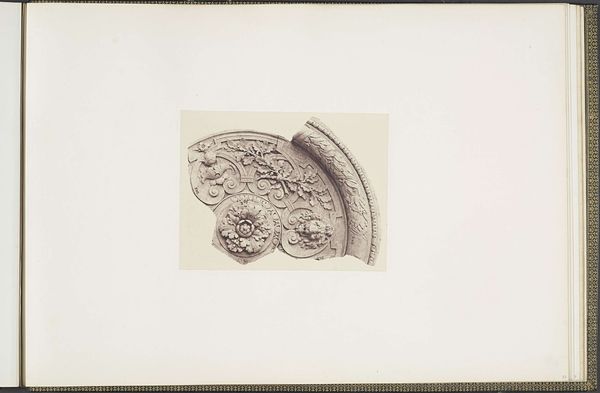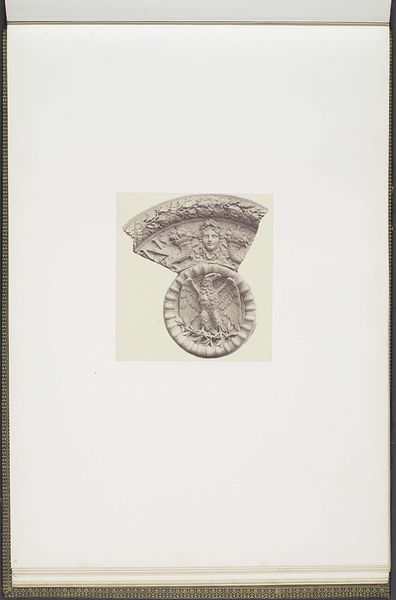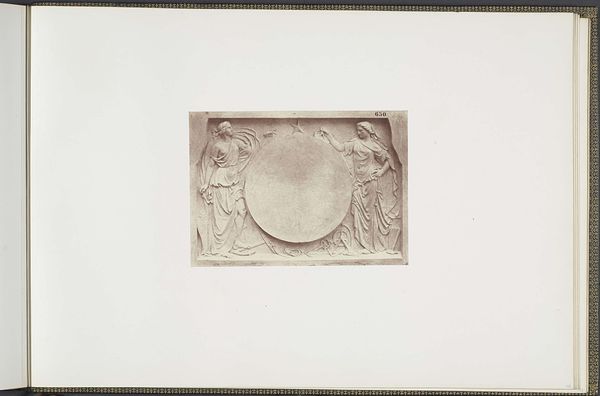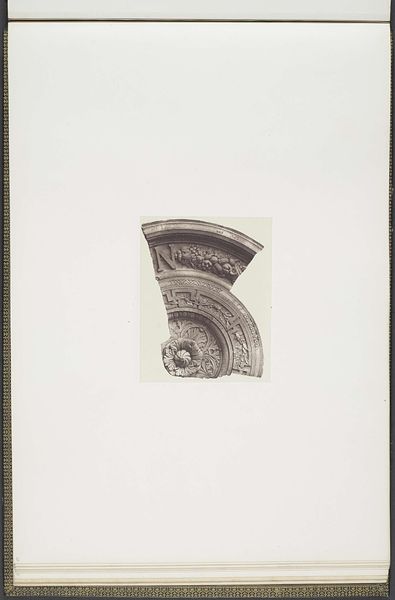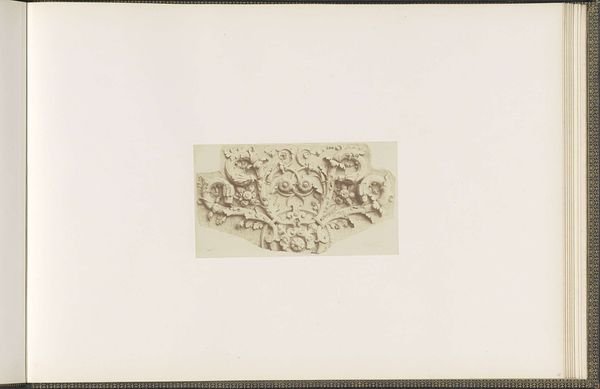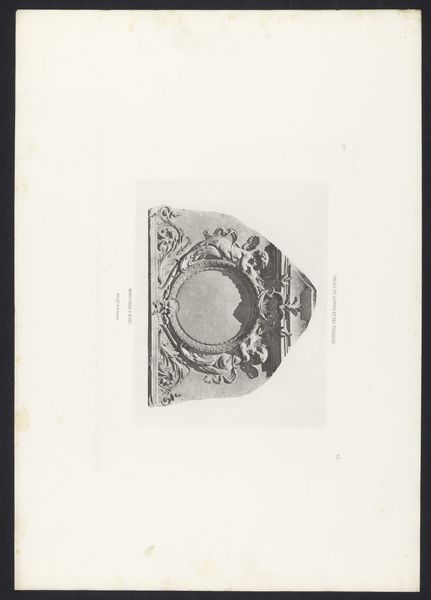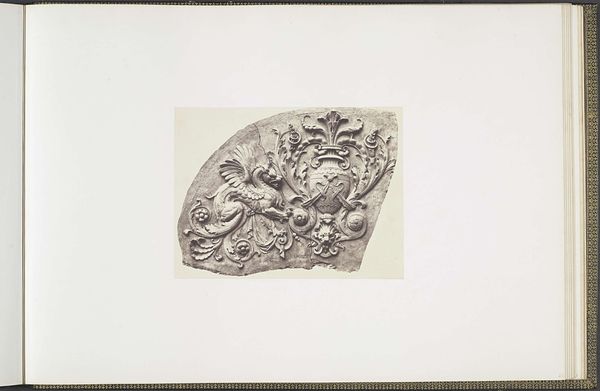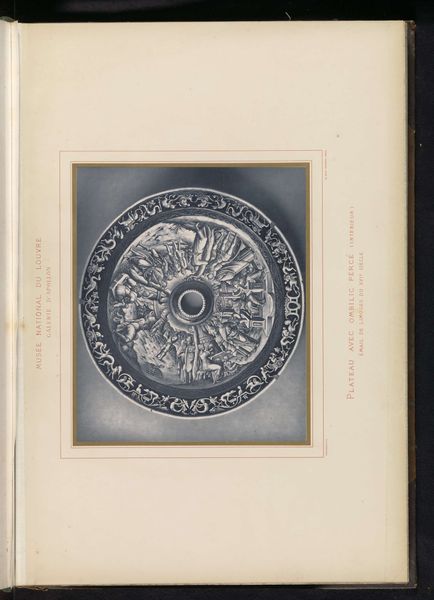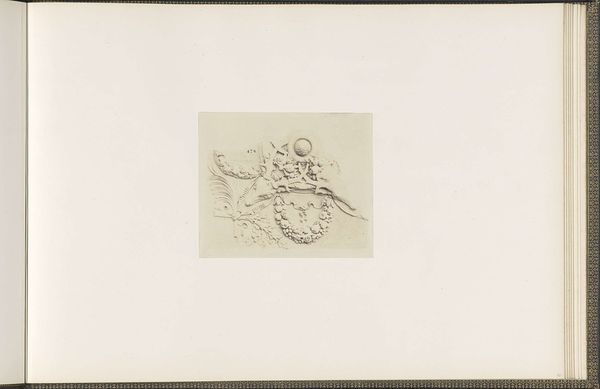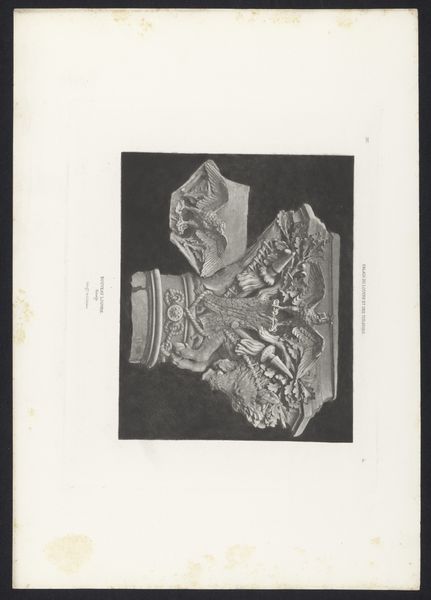
Gipsmodellen voor een versiering van het Palais du Louvre door Alexandre Lequien c. 1855 - 1857
0:00
0:00
edouardbaldus
Rijksmuseum
photography, sculpture, gelatin-silver-print
#
portrait
#
neoclacissism
#
photography
#
sculpture
#
gelatin-silver-print
Dimensions: height 378 mm, width 556 mm
Copyright: Rijks Museum: Open Domain
Editor: I find the delicate rendering of plaster particularly fascinating in this photograph. Curator: Indeed. This gelatin-silver print captures the plaster models created by Alexandre Lequien around 1855-1857 for adornments on the Palais du Louvre. The photographer is Edouard Baldus. What are your initial observations? Editor: The Medusa head at the center draws my gaze. It's framed by these intricate garlands and weaponry; the textures are wonderfully captured, really showcasing Baldus's skill in translating sculpture to photography. You know, thinking of Lequien and his studio producing these models… Curator: The Neoclassical style is undeniable. Observe the careful arrangement: the balance between naturalistic elements and classical motifs like helmets and foliage, the idealized head. There is such considered formal arrangement at play here. Editor: Right. The process itself is compelling. Imagine the labor invested in crafting these models and the temporary nature of it, before they were immortalized in stone. Then Baldus photographs this only for the ornamentation to potentially last much longer on the Louvre's facade. There's also a level of craft in capturing it like this on gelatin-silver, how light interacts with these materials. Curator: Yes, Baldus masterfully uses light and shadow to emphasize the sculpture's form, giving it volume. See how the shadows create a clear and coherent structure. What strikes me, ultimately, is the order and restraint, classicism's hallmark—the intellectual underpinning informing both Lequien’s sculpting and Baldus’s capturing of it. Editor: I agree on that restrained sensibility, it brings forth the classical references within a system that must’ve taken much longer than any traditional painted portrait. A collaborative effort if there ever was one. Thank you for this astute analysis! Curator: Thank you. It has been a pleasure decoding this work alongside your insights on its fabrication!
Comments
No comments
Be the first to comment and join the conversation on the ultimate creative platform.
